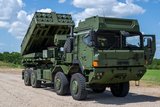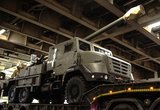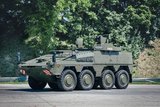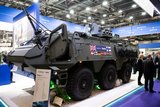EDA looks to increase artillery accuracy
The European Defence Agency (EDA) has detailed the results of its Course Correction Fuze (CCF) project, which was carried out to increase the accuracy of artillery systems used by member states' armed forces.
The CCF project was initiated in 2012. The aim of the work was to develop common technical knowledge on cost-effective and affordable solutions for reducing ballistic dispersion and enhancing the accuracy of artillery rounds, by introducing a new type of fuze.
The project has resulted in a Common European Requirements document for CCF being developed and distributed to participating member states' capability and armaments authorities in late 2016. It was also recognised that there is a need to have a harmonised approach to the challenge of integrating, testing and evaluating CCF into existing and future artillery systems in order to generate costs savings.
A dedicated investigation on CCF integration with artillery systems in the EU was developed during 2016 and successfully delivered in early 2017. Phase one of the investigation was primarily devoted to the collection of information on available CCF solutions, artillery systems and ammunition in the EU. Five of the identified CCF solutions were selected, some of which use airbrakes to reduce the down range dispersion, while others use fixed or movable canards that reduce both down range and cross range dispersion.
Phase two consisted of an analysis of those five CCF solutions and their integration into both the artillery systems and the ammunition used by the participating member states. Phase three of the project focused on developing conclusions and recommendations in view of identifying future opportunities for cooperation.
Among the main conclusions is that there are many opportunities for cooperation, pooling and sharing despite the fragmented picture of artillery systems used by European armed forces. Several countries use the same type of artillery system and, therefore, can easily share and follow the same CCF integration steps.
Furthermore, opportunities for collaboration even exist for countries using different systems for which at least some synergies can be found in terms of similar subsystem characteristics such as calibre, fire-control software or ammunition types.
In a broader perspective, the joint development of ballistic calculation software and fuze setter standards and the definition of interfaces and data protocols for CCFs were also recommended to achieve an efficient integration in artillery systems. Specific work strands were identified and an action plan has been proposed. It also became clear that the currently ongoing review of the Capability Development Plan should take into account future CCF integration into artillery systems.
More from Land Warfare
-
![Lithuanian 1st Division to achieve initial operating capability in 2026]()
Lithuanian 1st Division to achieve initial operating capability in 2026
Lithuania is one of the countries stepping up its defences in the face of the war in Ukraine with a particular focus on its neighbour and Russian ally Belarus, which has been making incursions into Lithuania’s airspace with balloons and drones.
-
![Beyond Survivability: How Active Protection Systems Are Empowering Commanders (Podcast)]()
Beyond Survivability: How Active Protection Systems Are Empowering Commanders (Podcast)
As threats diversify and intensify, APS are proving essential not just for vehicle protection but also for enhancing operational freedom, effectiveness and mission success in contested environments.
-
Medium knocked out of British Army LMP, with CAVS as heavyweight champion
As the British Army seeks to modernise and consolidate its diverse vehicle fleet, yet another change in direction is underway.






















